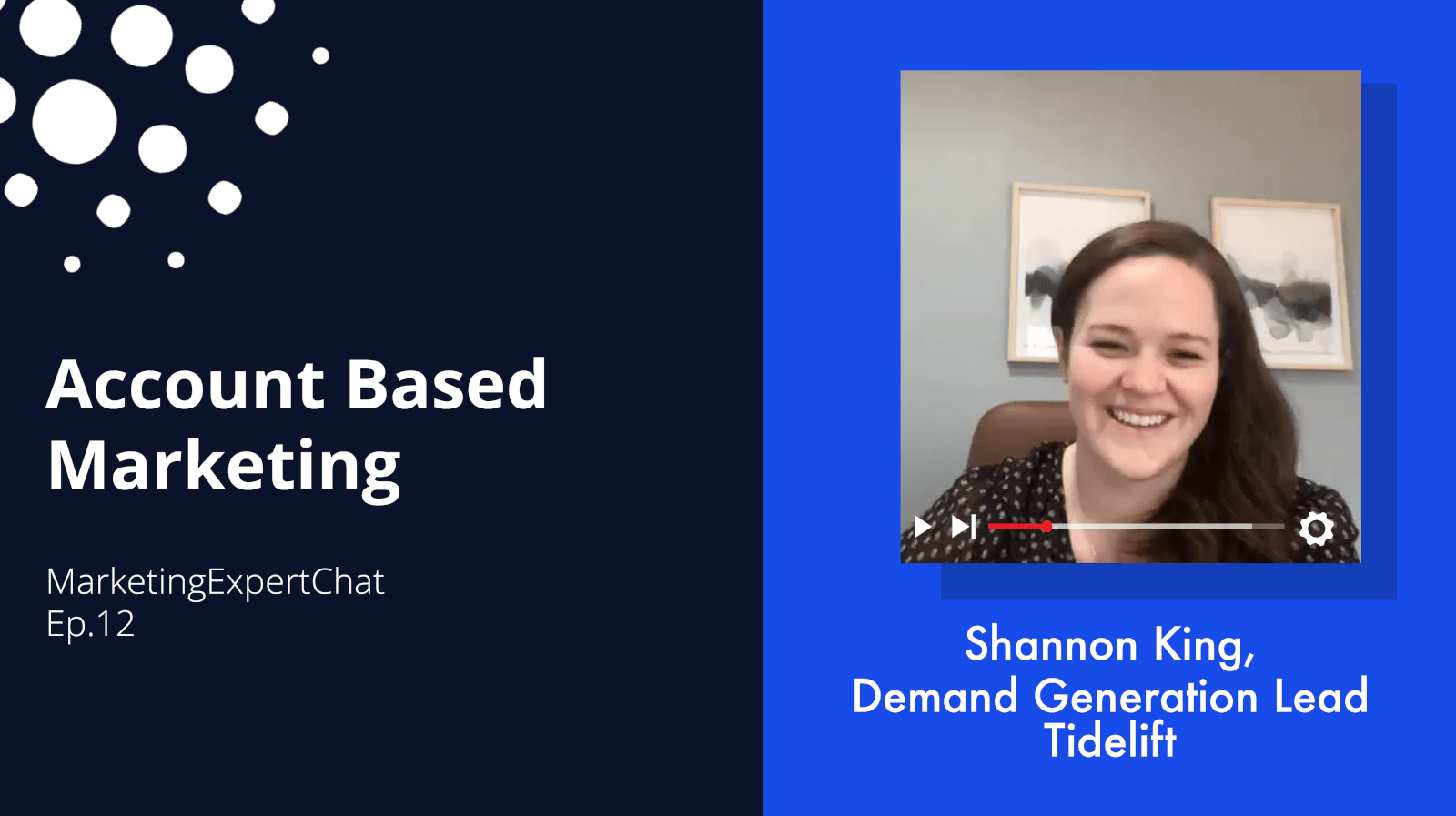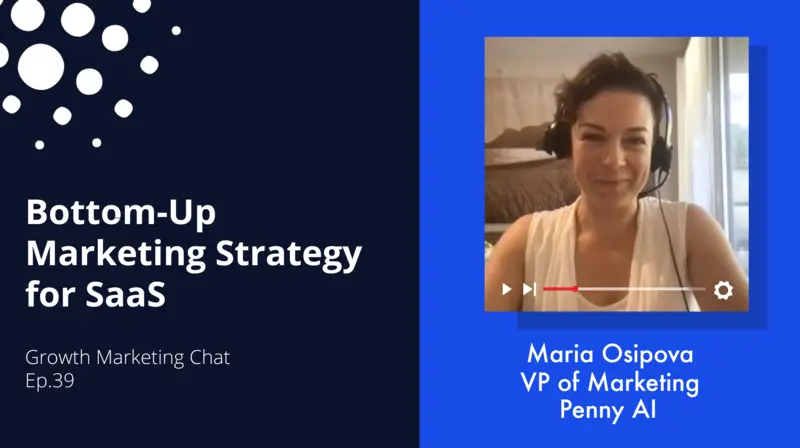A lot of B2B marketers experience difficulty with determining an approach that works when marketing a product or a service directly to executives at large companies.
If you’re working at a small or medium-sized business, how do you build trust with the executives? How do you make sure your outreach is more appealing than the competition’s? How do you ensure your emails aren’t going straight to spam or trash? The questions are endless.
But, what if we told you there were just 5 simple steps that would help you sell your B2B product to an executive at an enterprise?
B2B Marketing to Fortune 500 Companies
Michael Voellinger, Head of Marketing & Business Development at Yates Ltd., shares his expertise on how to successfully market and sell to the C-Suite at Fortune 500 companies, and he divides his advice into 5 clear steps.
-
Build a relationship: Focus on fostering a connection with your prospects, not on selling your service or product.
-
Embrace reality: Accept that, as a SMB, you’re an “unknown” and a risk to the C-Suite targets.
-
Do your homework: Create thoughtful, valuable messaging and content rooted in research.
-
Be strategic and tactful: Craft email marketing content that will avoid spam traps and keep things clear for your prospects.
-
Respect the process: Understand that you will likely have to make your pitch down the ladder, even after attaining the Exec’s interest in your product or service.
Reading these bullet points isn’t enough. Michael shares brilliant details and examples that you won’t want to miss out on.
Tune in now to see how you can work these approaches into your B2B growth marketing strategy!
Video Transcript:
CAROLINE: Hi, today I’m here with Michael Voellinger. Michael held many executive roles and advisory roles at different companies, and he is the Head of Marketing and Business Development at Yates Ltd. Michael, thank you so much for being with us today.
MICHAEL: Thank you for having me.
CAROLINE: So, today I have a very interesting question for you that I think a lot of marketers have challenges when addressing that kind of market. So, your company is targeting really large, Fortune 500 companies and you’re targeting C-level executives. And so, to reach this kind of personas you obviously need kind of a very different approach than when you’re targeting broader markets.
MICHAEL: That’s right.
CAROLINE: So, my question to you is how do you approach marketing to high-level executive at really large companies especially when you are yourself in kind of small or medium business and you don’t have unlimited resources and you need to be really strategic about your approach.
MICHAEL: That’s right. It’s a great question. And I will tell you to all of my sales brethren out there who are not necessarily doing the marketing part, it is a really difficult thing to do. Do not underestimate this effort. And I’m sure anybody’s that they’re out there doing it today I’m preaching to the choir. It is really difficult. When I think about it more from a marketing perspective, it really comes down to five things that are the most important. We’re a small business doing this. And we’re pitching consulting services, transformational change, things like that really very substantial, not only from a cost perspective but also just in terms of gravity at what we’re doing. So, it comes down to five things for me.
Number one, when you’re looking at the C-suite the objective should never be, as a marketer or a salesperson… The objective should never be that first thing or that first outreach. You’re not trying to sell something at that point you’re trying to build a relationship. I can tell you after doing this for a lot of years, making that your number one priority, will go a long way in generating results. You have to rethink what you’re trying to do. I understand if you have a product, a piece of software or an app, whatever it is, right, and you’re a small business and you’re all lathered up I’ve got the greatest thing since sliced bread, that’s awesome, but you have to build a relationship first. That C-level executive needs to believe in you and why you’re doing what you’re doing before you ever get to a product or service. It takes time and the best advice I can give there is just be genuine and be yourself. There’s only in the Fortune 500, if that’s your target market, there’s only 500 of them. So, if you blow the marketing strategy and go out to all 500, you potentially do some damage there. So, build the relationship not the appointment out of the gate.
Number two, you need to understand and respect the risk that you represent as a smaller medium business to the C-level person that you’re pursuing. You’re very likely unknown to them. Your product and service, your company, you personally, you’re an unknown. Whatever you’re pitching, including yourself there’s internal and external competition for that. So, if it’s automation or the next greatest CRM app or whatever it is, understand and just think about the perspective, who you’re talking to and what’s likely in their environment today. You’re an unknown, you’re risky. You’re asking them at the end of the day, if you follow the relationship through, you’re asking them to take a piece of their reputation and stake it on you, to say let’s give this a try or let’s install this in our environment. That’s a big risk for them, because if it goes south, it goes right back to the source, right?
CAROLINE: Right.
MICHAEL: So, you need to understand that that risk and respect it as you’re marketing to these folks. The other thing is, and I know you and I have talked about previously is, you really need to be thorough and thoughtful in the message that you’re sending. So again, the objective is build the relationship but when you do the outreach… That first outreach that’s really your chance to set credibility. So, you’re asking them for an investment of their time to review your message, to think about what it is that you’re saying. They get a hundred of these every week. So, do your research and be relevant cause it does build the credibility. Read the quarterly reports and the annual reports scrub the news, it’s a wonderful thing on the internet. We have all kinds of information out there all of these is available. Read the bios and backgrounds of the executives, their peers, not just the person that you’re targeting but also their peers. Do your homework on relationship triangulation look at the board of directors, look at those strategic partners that the company has announced. And start to bring those pieces together and formulate a strategy that is very relevant. So, when that message hits them, it’s something that’s on point it’s relevant to what’s happening in the business and their marketplace and it’s not COVID. Everybody COVID out there so, I would stay away from that. But yeah, I’ll give you a great example, I’ll pick on artificial intelligence. So, AI and automation or robotic process automation there’s a lot of activity in that space today, a lot of them are SMB businesses. We have the greatest automation tool ever, you need to check this out and goes well… You know what that C-level executive is thinking? I spend 50 or 60 million a year with Microsoft and they do that too. So, what exactly are you proposing to me that I displace that portion of my Microsoft? Like, you need to think through how you’re gonna position this and doing that homework and that triangulation ahead will really help you.
Two more quick things, and one of them is very tactical, which is, I have learned this lesson the hard way don’t send attachments and links, especially to C-level executives. It is very rare, you will now, especially these days with all the phishing attacks and things like that, very rare you will make it through the firewall. And number two, your audience is likely gonna give 10 maybe 12 seconds to your message on their mobile device. Don’t send them to a webpage, don’t say click here, enter your name and phone number. Like no, it’s not gonna to happen. They’re gonna delete, That’s the immediate response and you’re done it’s just not gonna get read. So, that’s the tactical piece.
And then the last one, which is really… Even if you get interest from a C-level executive you need to respect the fact that you’re gonna have to sell down the chain from that. So, as you’re formulating your marketing strategy and you’re thinking about, I wanna go… I want to target the CIO at ABC company and they have a great, technology refresh going on or there’s this massive transformation, that’s awesome. Understand that, getting that C-level executive interested in whatever you’re pitching is step You are absolutely gonna need to get their direct reports on board and even the level below that. I have seen time and time again I’ve seen it in previous businesses I’ve been involved in where you get the C-level sponsor excited and then you hit the ground running inside the client and nobody knows who you are, why you’re there, or why it’s important about, why are you in my backyard? You do not want to start that way so, I would urge the folks that are marketing to the C-suite, as well as selling, make sure you get those levels down, included in your strategy, and accommodate that and make sure that they’re educated on the value proposition. I think these five things will bring a lot of success. I know it has over the last 20 years for me.
CAROLINE: Right, well thank you so much for sharing this Michael, I think I’m just gonna to play this and replay a few times to make sure to hit all the marks. But no, seriously, thanks a lot. It was really, really helpful so, thanks so much for being here and participating today.
MICHAEL: Thank you, appreciate it.






